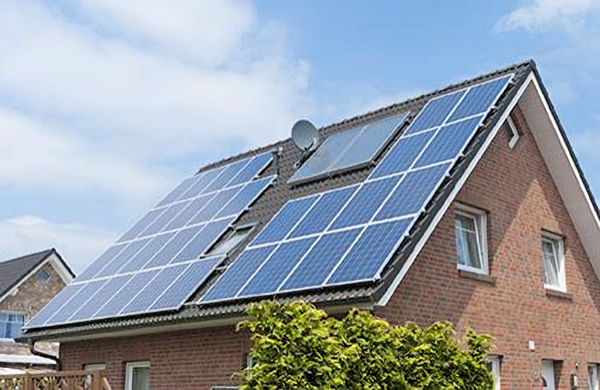 Crying Won’t Help You and Praying Won’t Do You No Good!
Crying Won’t Help You and Praying Won’t Do You No Good!
You might recall this riff from a great band (When the Levees Break, by Led Zeppelin). You also might disagree with it, and I’m glad you do. What does this have to do with climate change? Carbon and greenhouse gas emissions are changing our global climate and weather to be dangerous and inhospitable to our traditional way of life. We may cry and pray for it to get better, but we still need to take definitive action.
Everything is Electric
Though it is hard to imagine a world where everything is electric, every step we take will help make that world a reality. I am fortunate to have worked with environmental matters for all my carrier, and have remediated problems such as PCBs, asbestos, lead, chlorinated solvents, and more. The song remains the same today, and now it is time to attack greenhouse gas emissions. Businesses and individuals are embracing various cost-effective solutions that will reduce our reliance on burning fossil fuels and help adapt our society to clean energy. The solution to transition to green power sources can be found for mostly everything. Most methods of transportation, most products, and most services that we use can be transitioned overtime to using energy sources with low/no carbon emissions (such as solar and wind power). All of us: whether as a business or as an individual, need to make plans to mitigate the burning problem of greenhouse gas emissions.
On The Hunt
I am incredibly fortunate to work for the environmental team at the world’s best winery, so I will use a winery as an example. Working in a winery, like many other businesses, presents many opportunities for carbon emission reduction. Let’s go on an energy and carbon emissions hunt!
 We will hunt for energy uses and measure the carbon footprint of the winery. To do that, we will focus on all the key processes of the winery: growing grapes in the vineyard, fermentation, cellaring, bottling/warehousing, shipping, and all the products and services we buy along the way for processing and packaging. All these areas are a carbon hunter’s dream.
We will hunt for energy uses and measure the carbon footprint of the winery. To do that, we will focus on all the key processes of the winery: growing grapes in the vineyard, fermentation, cellaring, bottling/warehousing, shipping, and all the products and services we buy along the way for processing and packaging. All these areas are a carbon hunter’s dream.
As we identify energy uses, we will convert them into carbon emissions using a carbon calculator. We hunters absolutely love publicly available carbon calculators. These calculators can give businesses and individuals the tools to measure emissions, set a baseline, and track progress on mitigation. There are many footprint calculators, and a great calculator is available at coolcalifornia.arb.ca.gov/climate-calculators. Also, thanks to the World Resources Institute (WRI), we can all calculate our carbon footprints using a standard method. The WRI Greenhouse Gas Protocol sorts emissions into convenient scopes such as our direct controllable emissions and supply chain related emissions (wri.org). [Note: the Napa Sierra Club uses a website called RegenerationNapa.org that helps calculate and then reduce your household carbon emissions. Please join our "Team" here.]
Every Rose Has its Thorn
If a power source was either made with fossil fuels or works by burning fossil fuels, it contributes to our carbon footprint, and can be transitioned to greener options.
First, take fossil fuel engines as an example: they lose about 30% of their power during the burning stages. Because they waste valuable power and money, fossil fuel engines are less efficient. Now add in the amount of fossil fuels burned just to acquire and transport the fuel to those engines, and it really compounds our cost both in money and carbon.
 Heroes
Heroes
Thanks to the United Nations Intergovernmental Panel on Climate Change (IPCC), we now have a science-based goal for our carbon plan! The IPCC, the worlds scientific body on climate change, has determined that we need to collectively reduce our Carbon Footprint by 50% by 2030 and get to Net Zero by 2045 to stabilize our global climate (https://www.ipcc.ch/). The IPCC is the best Dub on the Track I can give you.
We Are Not Waiting for the World to Change
Acknowledging that every winery and every business is different, a winery’s transformation plan starts by targeting items which will be more cost-effective. We will use the WRI GHG Protocol to calculate the carbon footprint of our big energy uses based on the largest process steps. With our initial goal being a 50% reduction in carbon use by 2030, we will target both short-term and long-term opportunities to reduce carbon emissions, and layer them targeting a significant transition every year.
In the vineyard where the magic starts, we have great opportunities to transition equipment (such as gas/diesel fueled vehicles and engines for water pumps) to electric energy. Sustainable farming practices have been developing for years in the vineyards to reduce the amount of water and crop management additives utilized. Precision farming can make a big difference in carbon emissions, as utilizing less crop products and pumping less water takes less energy. Also, harvest equipment and trucking equipment are great targets for equipment electrification. I can’t wait for the new electric pickup trucks and tractors! Our plan will stick with a goal to reduce emissions at least 50% by 2030 and focus on precision farming and replacing old gas and diesel fueled equipment with new electric equipment.
In the fermentation and cellaring processes where the winemakers turn the grapes into taste explosions, heat is critical. In fermentation and subsequent processes to keep the wine cold in storage and at the optimal temperature for the bottling, there is significant energy need. There are also significant energy needs for related processing, pumping, system cleaning, support buildings, etc.
Looking at a winery’s energy supply feeds, there is a great opportunity to use 100% green energy. We can supplement feed from the utility with onsite generated energy from solar or another green alternative. Several utilities have the option to supply 100% green power at a reasonable cost, and that is a very simple way to achieve significant footprint reduction at reasonable costs.
 A great opportunity to reduce the carbon footprint is onsite power production via solar energy. The sun does not increase its cost every year like the utility does! There are several great companies that can install solar power at reasonable prices and with the option to use a Power Purchase Agreement. A Power Purchase Agreement is a great option to reduce capital spending and insulate operational costs in the future from increases in utility rates. Combining solar power with a battery bank can help store daily energy for use during peak utility cost hours and can also provide some operational flexibility in power outages. Remember the sun does not increase its cost every day for peak pricing or establish extra charges to pay for new infrastructure costs.
A great opportunity to reduce the carbon footprint is onsite power production via solar energy. The sun does not increase its cost every year like the utility does! There are several great companies that can install solar power at reasonable prices and with the option to use a Power Purchase Agreement. A Power Purchase Agreement is a great option to reduce capital spending and insulate operational costs in the future from increases in utility rates. Combining solar power with a battery bank can help store daily energy for use during peak utility cost hours and can also provide some operational flexibility in power outages. Remember the sun does not increase its cost every day for peak pricing or establish extra charges to pay for new infrastructure costs.
Don’t forget all the mobile equipment that supports the operations -- yes, most can be electrified overtime. Did you know that you can install a solar panel on top of a golf cart, and it will work great?
Reducing water use is also a great opportunity to lower emissions – every gallon of water not used reduces the energy needed to acquire, treat, and process the water. Furthermore, waste reduction and recycling programs are important for carbon reduction. Every pound of waste not created means less energy needed to transport and dispose it.
In the bottling and warehousing processes where we keep all the flavors ready to be unleashed, both packaging and keeping the wine cool are critical. The same measures for reducing carbon emissions for cooling, as previously noted, work great for this stage as well. Real reduction can be achieved using logistics and efficiency measures, and leveraging electricity for process equipment, transport, and warehousing. There are great incentive programs to take advantage of for electrification.
For the packaging, weight makes a difference in carbon emissions because more energy is needed to ship more weight. In packaging, there is a balance of materials, strength, weight, durability, and product protection in containers and shipping methods. There are many great minds working on this one, and I wish we had better infrastructure to enable more recycling. We all need to recycle the cardboard from the cases and the glass/plastic/aluminum from the containers. The more we recycle cardboard, glass, plastic, and aluminum, the less waste sent to landfill and the more recycled material we can utilize in future products.
We also have supply chain opportunities with all the products and services that we utilize to build our products. As we set goals to mitigate our carbon emissions, we can share those goal with our suppliers. When our suppliers share and strive for those same goals in their operations and products, it will work to reduce the footprint of the products that we purchase.
Determining and leveraging the opportunities to reduce our carbon footprint with the most cost-effective measures will lower our collective costs. At the same time, it will make our operations and products better for our customers and communities.
 The Climb
The Climb
Yep, you guessed it: another title from another great artist. It is a difficult task for all of us to take meaningful actions to reduce our carbon footprint, but we can do it. The first challenge is for each of us is to understand our carbon footprint and make plans to cut it in half by 2030. Do you want to learn how? At ClimateUnified.Org, we believe it is critical to help individuals and small business understand their carbon footprint and the best ways to mitigate their carbon footprint. To learn more about carbon emissions mitigation methods, please visit www.ClimateUnified.org, become a member, and support our non-profit work to stabilize our climate for future generations. Just start with replacing your most carbon-heavy and expensive use first, and transition from there as time goes on. Every carbon footprint reduction plan will be different. The important thing is to start the journey!